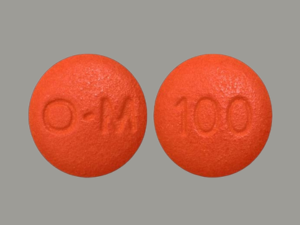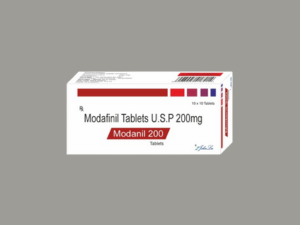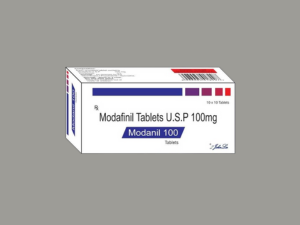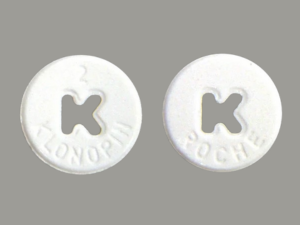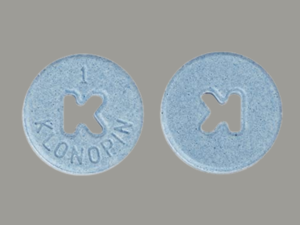
Methadone and Oxycodone in America: Emerging Treatment Trends
The Methadone and Oxycodone we see in America today, on the one hand, is a powerful pain reliever in prescription pain management, and, on the other hand, an essential element in opioid recovery and treatment. These two drugs are indicators of the changing medical trends, changes in regulations and the necessity of safe knowledge of opioid use in the USA. We discuss the use, treatment, and re-definition of Methadone and Oxycodone in modern healthcare, and explain how they can be considered in the context of the greater narrative of prescription pain management in America, opioid recovery and therapy trends, safe opioid use awareness, and online pharmacy pain relief medications.
Table of Contents
Introduction: What are Methadone and Oxycodone?
Oxycodone is a semi-synthetic opioid analgesic that is used to treat moderate to severe pain, usually after surgery, or in case of chronic pain when other forms of therapy have been tried but have failed.
Meanwhile, Methadone has its two sides. It was originally used to treat pain but it has now been used as an essential drug to treat opioid use disorder (OUD). Due to this duality of action, the two medications possess diverse but related functions in pain control and rehabilitation treatment.
In America, the today prescription pain management is strongly based on the guidelines that safeguard the opioid prescribing, as the opioid recovery and recovery trends emphasize medications such as Methadone as a central element in restoring the control of health to patients.
Trends of the Past: The Oxycodone Resurgence and Recalibration
At the beginning of the 2000s, Oxycodone became one of the most popular opioids prescribed. At this time, pain was commonly referred to as the fifth vital sign which resulted in rampant dispensing of strong painkillers.
Nonetheless, this was soon followed by overuse and dependency which culminated into what is currently referred to as the opioid epidemic. The prescribing rules in the U.S. government and health authorities have been tightened since. In the past few years since 2012, the volume of opioid prescriptions has steadily decreased due to the increasing stress on risks and long-term dependency.
It is a breakthrough in the way chronic pain is managed—no longer is the intensive use of opioids such as Oxycodone as the way to manage chronic pain but rather adopt multi-modal pain management approaches such as physical therapy, counseling, and non-opioid approaches to managing chronic pain.
The Shift of Methadone: Pain Killer to Recovery Aid
Methadone has changed its image tremendously. Although it was commonly used as a pain reliever, it is currently mostly applied in opioid treatment and recovery programs as a part of medication-assisted treatment (MAT).
Methadone has some use in alleviating withdrawal symptoms and cravings in opioid addicts. It provides stability and a patient can then live normally as he/she slowly takes control of his/her life.
This transition is the step toward safe opioid use awareness USA, and the way how an opioid could be both a cure to an addiction and a remedy to the controlled recovery with the help of the profession.
The Intersection: Pain Management, Misuse Risk and Recovery
There is a thin line between pain management, dependency, and recovery. Patients receiving Oxycodone on legitimate grounds due to pain development may tolerate or get addicted to it without close observation. This interplay has precipitated emerging treatment models integrating safe prescribing and recovery-oriented treatment.
Methadone comes out as a beacon of equilibrium—it offers therapeutic relief and reduces the chances of misusing it under the structured programs. Nevertheless, there are still difficulties as not all Americans requiring opioid use disorder treatment can access such medications as Methadone.
This intersection is important to understand to develop effective policies, enhance patient safety, and create effective knowledge of safe opioid use in America.
New Trends in the USA Treatment
The opioid environment is changing. There are a number of major trends that are taking shape of the current usage of Methadone and Oxycodone.
The board of nurses specifies safer prescribing of Oxycodone in.
The regulatory bodies now suggest reduced opioid prescriptions in cases of acute pain and promote other treatment options in the case of chronic pain. This will reduce dependency and will be in line with a national trend toward responsible pain management.
Widened Access to Methadone Programs
The increased accessibility to methadone treatment is possible due to the softening of regulations and telehealth assistance. Supervised take-home doses have become available to patients or remote initiation of treatment which offers more flexibility and safety.
The Digital and Online Access
Access to both genuine and fake opioids has become wider with the development of online pharmacy pain relief medications. On the one hand, controlled online pharmacies are convenient and associated with privacy, on the other hand, unfamiliar sellers can be life-threatening. Safe opioid use awareness USA in digital health has become one of the priorities.
Pain Management Methods: The New Perspective of Chronic Pain Management
Long-term opioids are the challenge that chronic pain management in America was associated with in decades. This story is however changing.
The current chronic pain treatment approach has now focused on multi-disciplinary care, in which non-opioid drugs, physiotherapy, lifestyle change and psychological support are used. The use of opioids such as Oxycodone is still a conditioned usage but with a more supervised usage and reduced times.
The use of Methadone in the management of chronic pain has been limited and is mostly done in complex cases managed by pain specialists. All in all the trend is shifting to better, more natural remedies that will not cause any dependency but will be able to treat pain.
The Digital Problem of Online Pharmacies and Opioid Access
Online healthcare has altered the manner in which Americans obtain drugs. Pharmacy pain relief drugs are available online, which makes them easily delivered fast and conveniently to the individual, particularly the one in remote locations.
This accessibility however comes with challenges. False pharmacies habitually market opioid counterfeits in the shape of actual pills, which are at times laced with harmful substances. That is why it is important to check the authenticity of a pharmacy.
Legal e-pharmacies such as Aidbids fill the purpose of promoting safe access, appropriate verification, and educational objectives, so that patients know how to use opioids safely. Safe opioid use awareness USA is a bridge between convenience and safety which is supported with the help of digital education.
Treatment Results: Improvement and Problems
The change in the practices of opioid treatment and prescription has come with good results. The use of Methadone treatment has greatly minimized the overdose death and enhanced the process of recovery among patients with opioid use disorder.
Meanwhile, the number of Oxycodone scripts written is reducing, which is contributing to restricting the number of dependency cases. Still, the work is not over, as there are lots of patients with opioid addiction who are not treated, as well as there is still the problem of chronic pain.
The combination of medication-assisted treatment, behavior therapy, and the education of the population is the solution to the progressive efforts of prescription pain management in America and the provision of safe and effective services.
The Way Forward: Providers, Policy, and Patients
To the patients: Knowledge is power. Knowing the differences between Methadone and Oxycodone makes people make informed choices concerning treatment and recovery.
To the providers: To achieve long-term safety, responsible prescribing, constant monitoring of the patient, cooperation with addiction specialists is required.
In the case of online pharmacies: Transparency, regulation, and patient education must continue to be among the priorities to avoid abuse and guarantee the trust in e-healthcare.
To policymakers: The key to future of opioid treatment in America is expanding access to treatment programs, enhancing prescription tracking, and ensuring national safe opioid campaigns.
Verdict: An Epilogue to Suffering and Rehealing
The Methadone and Oxycodone in America is a challenge and a transformation. The role of Oxycodone in pain management is changing because of tougher regulation and awareness around the use of this drug to promote safe use. Methadone, however, remains the leader in the trends of opioid recovery and treatment, becoming the hope of millions of people who fell victims of addiction.
The way ahead is evident—balance access, make it safe and advance education. By means of collective consciousness and responsible actions, America could keep enhancing prescription pain management, increasing recovery availability, and decreasing opioid abuse on the national level.
Frequently Asked Questions (FAQs)
Q1: How does Methadone differ primarily with Oxycodone?
Methadone is mainly taken to counter opioid addiction whereas Oxycodone is taken to counterpain. Methadone is used as a means of preventing the appearance of withdrawal symptoms, and Oxycodone is applied as a direct analgesic.
Q2: What is the changing trend in pain management in terms of treatment in America?
Off-label opioids are being used less frequently by physicians who are adopting other pain management strategies such as physical therapy, non-opioid drugs and combined wellness programs to avoid excessive dependence.
Q3: What is the significance of Methadone during opioid recovery?
Methadone is an essential drug in an opioid recovery. It stabilizes the patients, cravings diminish and patients can live productive lives even as they are slowly getting rid of addiction.
Q4: What is the safety of online purchase of pain relief?
It is also safe to purchase in licensed online pharmacies, but the unqualified vendors can offer counterfeited or dangerous drugs. Always check the credentials of the pharmacy and make sure that it uses correct prescriptions.
Q5: What are contemporary substitutes of Oxycodone to chronic pain?
There are painkillers that do not contain opioids, physical therapy, nerve stimulation therapy, and cognitive-behavioral therapy, among other options, which assist with pain management without making anyone dependent.
Call to Action
In case you are looking into safe and efficient pain management techniques or opioid recovery, refer to Aidbids.com to find the trusted and discrete and verified medication assistance. Keep informed, keep safe, and take the care of your health under expert advice.

